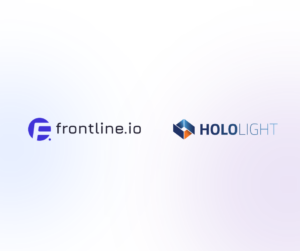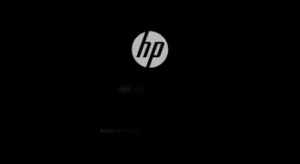Introduction
"The U.S. Bureau of Labor Statistics underscores the severity of this trend, forecasting an annual need for over 125,000 new engineering professionals through 2030.1"
The printing industry stands at a crossroads, faced with a growing engineering talent gap that threatens to stifle innovation, efficiency, and growth.
This challenge, declining interest in STEM (Science, Technology, Engineering, and Mathematics) fields, and the allure of alternative career paths for engineering graduates, has far-reaching consequences.
Operational inefficiencies, increased downtime, and the inability to meet customer demands are just the tip of the iceberg.
As operations managers, our role extends beyond mere oversight; it demands strategic foresight and innovative solutions to navigate these turbulent waters.
This article goes into the multifaceted nature of the engineer shortage within the printing industry, critically evaluates traditional approaches to talent acquisition and retention, and highlights the pioneering solution offered by frontline.io—a guiding light of hope in addressing this industry-wide dilemma.
The Engineering Deficit in the Printing Industry: Causes and Consequences
"The industry must explore ways to streamline operations, integrate automation for repetitive tasks, and possibly rethink service models to align with the available workforce."
The engineering shortfall within the U.S. printing sector mirrors a wider trend of talent scarcity prevalent across various fields. This shortfall is propelled by an amalgam of factors: an aging workforce nearing retirement, a diminishing interest among younger generations in STEM fields, and a notable drift of engineering graduates into roles outside their trained discipline. The U.S. Bureau of Labor Statistics underscores the severity of this trend, forecasting an annual need for over 125,000 new engineering professionals through 2030.1
Insights from the Boston Consulting Group further reveal the fragility of the engineering talent pipeline, from educational institutions to the professional realm. Despite a high initial interest in engineering among high school students, a mere 13% culminate their academic journey with an engineering degree. Even more concerning is that less than half of these graduates pursue careers in engineering. The gender gap exacerbates this issue, with women representing only 2% of engineering graduates, in stark contrast to their male counterparts at 10%. Moreover, the retention of women within engineering fields shows a significant decline over time.2
The printing industry is squarely in the crosshairs of this talent crisis. It grapples not only with the dwindling influx of fresh talent but also with the necessity for skills that align with contemporary printing technology and methods. A significant portion of the current workforce is edging towards retirement, leading to a ‘Silver Tsunami’ that threatens to erode the industry’s skilled labor base. The decline in apprenticeship and vocational training, once critical for cultivating new talent, exacerbates this skill gap, leaving a void in hands-on learning opportunities.3
Evaluating Established Strategies and Their Shortcomings in the Printing Industry
The printing sector’s response to the widening engineering talent void encompasses a variety of strategies, as highlighted by industry commentators Toni McQuilken4 and Deborah Corn5. The initiatives, while diverse, share a common goal: to rejuvenate the industry’s talent pool. Here’s an overview of these strategies and a critical look at their potential limitations:
- Transforming Industry Image:
The industry is striving to shed its old-fashioned reputation, highlighting its evolution into a high-tech arena. This rebranding aims to attract tech-savvy youth who might otherwise overlook printing as a dated field. - Embracing Diversity and Inclusion:
Recognizing the value of varied perspectives, the sector is making concerted efforts to welcome individuals from all walks of life, including women and underrepresented minorities. This approach seeks to enrich the industry’s creative and problem-solving capabilities. - Revitalizing Training and Education:
There’s a push to modernize educational pathways through enhanced apprenticeships and vocational programs, offering practical, hands-on experiences. Partnerships with academic institutions are being forged to ensure curricula mirror the dynamic needs of the printing world. - Youth Outreach:
# The industry is actively engaging with the younger generation, aiming to spark early interest in printing careers through school partnerships and community initiatives.
# Enhancing Workplace Appeal:
- Efforts are underway to create more attractive work environments, recognizing that a positive workplace is key to attracting and retaining talent.
- Offering Competitive Rewards:
Printing firms are revising their compensation and benefits packages to stand out in the competitive job market, understanding that attractive remuneration is crucial for drawing in top talent. - Adopting Novel Recruitment Methods:
The sector is venturing into digital realms for talent acquisition, leveraging social media and online platforms to connect with potential candidates in novel ways.
While these strategies are steps in the right direction, they collectively overlook a critical aspect: managing the demand for engineering talent. Without addressing the root causes driving the incessant demand, these solutions may only offer temporary relief. The industry must explore ways to streamline operations, integrate automation for repetitive tasks, and possibly rethink service models to align with the available workforce. This holistic approach is essential for a sustainable resolution to the talent crisis in the printing industry.
frontline.io's Pioneering Strategy to Bridge the Engineering Gap
In the context of the ongoing engineering talent shortfall within the printing industry, www.frontline.io introduces a groundbreaking approach that targets the crux of the issue: the relentless demand for technical personnel. Our conviction lies in the transformative power of technology to reduce the necessity for extensive on-site engineering teams, thereby narrowing the talent gap from a demand perspective.
Our suite of applications is designed to diminish machine downtime, significantly elevate first-time fix rates, and curtail the need for field service travel. This innovation not only enhances operational efficiency but also presents a sustainable solution to talent scarcity by optimizing the use of available resources.
Key Features of frontline.io's Platform:
- AR-based Remote Support
Facilitates instant, on-the-spot problem solving through augmented reality guidance. - Virtual Training
Empowers immersive learning experiences in a controlled, virtual environment. - Parts Catalog and Spare Parts Management
Simplifies the identification and management of parts, enhancing operational efficiency. - Digital Twin Scene
Creates a virtual replica of physical assets for monitoring, training and support - Interactive 3D Flows and Procedures
Visualizes complex processes in an interactive 3D format, making them easier to understand and execute.
We invite you to look deeper into the transformative solutions Frontline.io offers by visiting our website at www.frontline.io The Showroom section, in particular, provides a vivid depiction of our technologies in action, including real-world applications and testimonials from our diverse clientele. This section exemplifies how our innovative approach is not just theoretical but a proven strategy for mitigating the engineering talent gap in the printing industry.
Demonstrating Impact through Case Studies
A compelling example of the efficacy of frontline.io’s solutions is illustrated through our engagement with a manufacturer of high-end digital finishing equipment for the packaging industry. This company, with a global footprint, traditionally relied on its specialist engineers to resolve complex issues, often necessitating extensive international travel. It was not uncommon for these experts to embark on cross-Atlantic journeys, where the resolution time on-site might span only a few hours, despite the travel and preparation time extending to several days.
The implementation of frontline.io’s technology marked a significant turning point. By leveraging our advanced remote support capabilities, the company experienced a remarkable 15 percentage point increase in its remote resolution rate. This shift not only minimized the necessity for travel but also translated into substantial cost savings. More critically, it led to a tangible enhancement in end-user productivity—by upwards of 10%—a metric that directly impacts the bottom line of their clients.
Perhaps most importantly, this strategic technological integration has elevated customer satisfaction levels. The ability to swiftly and efficiently address and resolve issues without the delay and disruption of waiting for specialist intervention underscores the value of frontline.io’s innovative approach.
Deployment Framework and Effective Practices
The approach to integrating frontline.io’s solutions is straightforward yet impactful, focusing on the adoption of cutting-edge tools such as Augmented Reality (AR), Virtual Reality (VR), and Digital Twin technologies. The key lies in selecting a platform characterized by swift deployment capabilities, ensuring minimal disruption to existing operations.
Critical to this strategy is the autonomy in content creation, allowing organizations to tailor the technology to their specific needs and challenges. A unified platform that addresses all aspects of training, support, and operational efficiency is essential for a cohesive and effective implementation.
frontline.io stands out as a prime candidate in this realm. Our platform is designed with the end-user in mind, offering intuitive content creation tools, comprehensive support features, and a seamless integration process. This holistic approach not only streamlines the adoption of AR, VR, and Digital Twin technologies but also fosters a culture of continuous improvement and innovation within the organization.
Embracing frontline.io’s suite of applications can significantly enhance operational efficiencies, reduce reliance on extensive on-site engineering teams, and ultimately contribute to closing the engineering talent gap in the printing industry. Our platform is not just a solution; it’s a strategic partner in your journey towards digital transformation and operational excellence.



